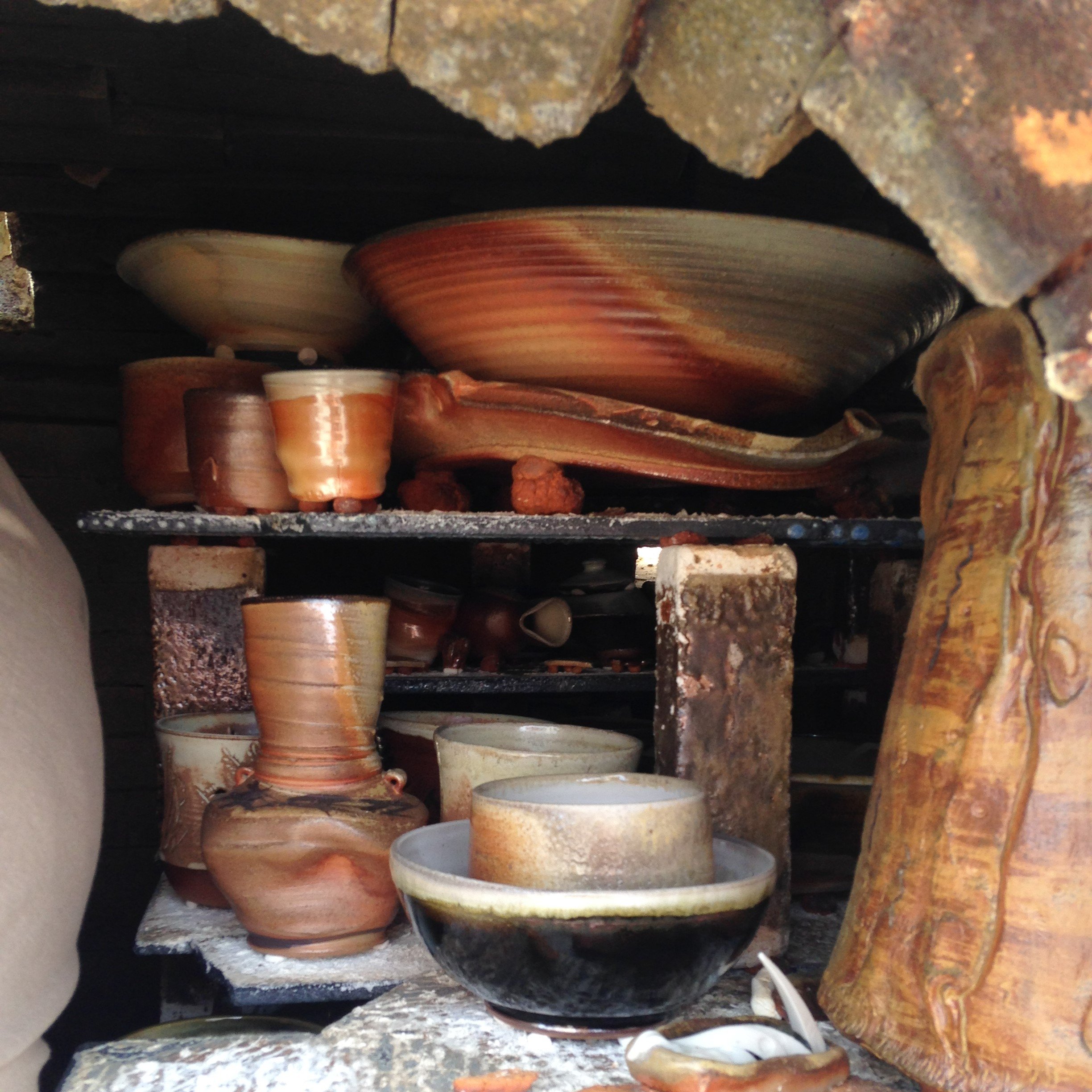Wood Kilns
Photo courtesy of Zach Nies
The oldest known piece of pottery is around 20,000-years-old, and most likely was fired with wood. All these millennia later, some potters still prefer to use wood to fire their work. Modern potters are often drawn to this fascinating (yet laborious) process for its unpredictable (but beautiful) effects of flame and ash.
In addition to using regular electric and natural gas kilns, Groundworks Art Lab operates two woodfire kilns - an Anagama kiln and a Bourry Box kiln. Each year, we offer woodfire classes where students learn techniques catered towards making, decorating, and firing work in these kilns.
Traditional Japanese Anagama or “cave kiln”
Anagama, meaning “cave kiln,” is a traditional wood burning kiln that was brought from China via Korea to Japan in the 5th Century. This type of wood kiln is a single-chamber kiln, which requires adding wood (aka “stoking” the fire) around the clock for days until a temperature of around 2350F is achieved. Wood is loaded into the main fire area (on the right of the diagram above) and then added along the sides (between the stacks of pots) to build up temperature.
Burning wood in the same chamber as the pots creates unique patterns, as fire and ash swirl around each piece. The finished product is highly variable, depending on the position and atmospheric conditions inside the kiln at that particular site.
Students are involved in all aspects of the firing, including wood preparation, kiln loading, firing, unloading and of course cleaning up!






